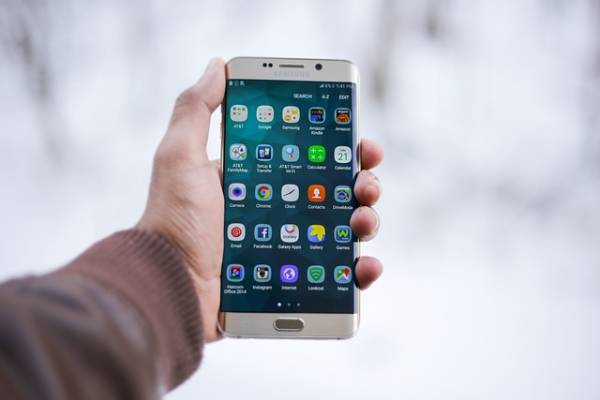Enhanced security features that protect your data from hackers. Access to new features that improve smartphone functionality.
More storage space, so you don’t run out of room for important photos, videos and apps.
Better battery life that avoids those frustrating moments when your device runs out of power just when you need it most.
Better Camera Capabilities
Smartphone cameras have become a key selling point for smartphones as they continue to improve. Smartphone users are more interested in their photos and video than ever before, and smartphone makers have responded by putting an emphasis on-and investing heavily in-camera capabilities.
Whether it’s in the form of a better sensor, more megapixels or enhanced software features, smartphone camera quality continues to get better and better. The best smartphone cameras have image stabilisation that minimises the effect that shake has on your images, and many are capable of capturing 4K video for super smooth footage.
Another important feature to look for is a dual-camera setup. Dual-camera phones usually offer a main camera and a secondary lens for a depth sensor or ultra-wide angle shots. The latest smartphones are also including triple or quad-camera modules and offering some impressive shooting modes like black and white photography and bokeh effects.
Lastly, it’s worth checking if the smartphone you’re considering has a dedicated macro camera. A dedicated macro camera allows you to take close-up shots of small objects and can be a real boon when photographing flowers, insects and other tiny creatures. Other useful camera features to look out for include the ability to record in 4K and a telephoto lens for improved zooming capabilities. Also check that the camera offers a wide range of lighting modes to suit your environment and the option to shoot in RAW format.
A Better Screen
A smartphone with a high-quality display does more than just look pretty. It also ensures that apps run smoothly without lag. For instance, a smartphone with an OLED screen can produce richer colors and deep blacks for a more vibrant viewing experience.
The smartphone’s processor also impacts the performance of an app. A phone’s core number and clock speed determines how quickly it processes data and executes tasks. A higher core number means a more powerful CPU, which can handle multiple tasks at once. A higher clock speed also allows the CPU to perform more demanding apps and games.
Internal storage is another essential feature to consider when upgrading to a new smartphone. This will allow you to store more apps, files, and multimedia content on the device. It’s also a good idea to choose a device with expandable memory, which lets you add an SD card to increase the storage capacity of your phone. You can find smartphones with a variety of internal storage options for different price ranges. However, it’s recommended to get a device with 64GB or more of storage for optimal performance.
A Faster Processor
The heart of your smartphone is the processor. It’s like your phone’s brain, and the better it performs, the faster your apps will load, videos will play smoothly, and multitasking will be a breeze. For power users, a powerful processor can even help prolong battery life.
The best smartphones run on a System-on-a-Chip, or SoC, with a central processing unit, or CPU, and graphics processing unit, or GPU, all built into one chip. Typically, the more cores and higher the clock speed, the better. Look for models with dual-core, quad-core, or octa-core CPUs that can divide up work and tasks to keep the device running fast without overheating or slowing down.
With these powerful chips, mobile phones can support core workflows like note-taking, scheduling, payments, and client management, all from a single device. This makes them an essential tool for professionals, as they can complete their entire workflows on the go instead of having to return to the office or their desktops.
Another way that a faster processor can improve smartphone performance is through software updates. Developers will optimize how the OS handles background processes and allocates resources, which can improve overall speed and performance. This is why it’s important to read reviews and stay up-to-date with the latest available updates. These will often include improvements in how the CPU handles memory, which can greatly reduce lag time and improve multitasking capabilities.
More Storage
If you’re someone who downloads every new app, constantly uploads and stores photos or videos, or a long-form podcast binger, a larger storage smartphone is a must. All these activities add up and quickly drain a phone’s internal storage. In fact, running out of space is the most common frustration for mobile users (in both the U.S. and UK), cited by more than three quarters of those planning to upgrade their smartphones in the next 12 months.
Modern smartphones feature advanced storage management capabilities that help keep device storage manageable and efficient. In most Android phones, for example, a simple tap on the Storage settings screen displays a color-coded bar chart that shows what’s using up your space. Phones with this feature can also provide intelligent suggestions for freeing up more space, like deleting unused apps, clearing cache, or automatically removing backed-up photos and videos.
Some devices with this feature can also optimize photo and video storage by keeping lower-resolution versions of captured files on the phone, while storing high-resolution originals in the cloud. And some smartphones enable users to manage app data on a per-app basis, deciding whether or not the software should be kept local on the phone, backed up to the cloud, or deleted from the device entirely. In addition, some smartphones allow you to expand their storage capacity by inserting a microSD card.
Featured Image Source: https://cdn.pixabay.com/photo/2016/03/27/19/43/samsung-1283938_640.jpg
